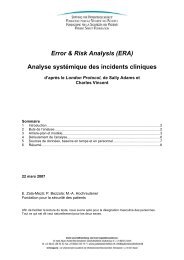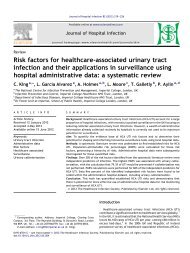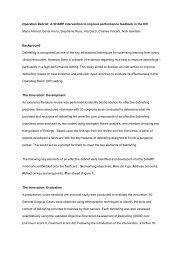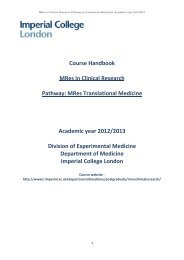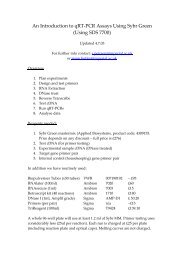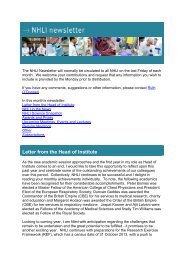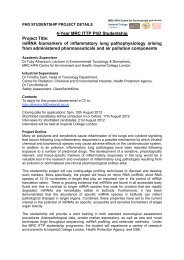QOF Plus Year 1 - Imperial College London
QOF Plus Year 1 - Imperial College London
QOF Plus Year 1 - Imperial College London
Create successful ePaper yourself
Turn your PDF publications into a flip-book with our unique Google optimized e-Paper software.
The quality and outcomes framework (<strong>QOF</strong>)April 2004 saw the introduction of the Quality and Outcomes Framework (<strong>QOF</strong>) as part of theNew Contract for General Practitioners where pay was linked to performance with the purpose ofdriving up standards for primary care. The framework includes quality and performanceindicators in a number of domains, including clinical, organisational and patient experience, aswell as additional areas such as cervical screening (Roland et al., 2004). The quality measures in2004 were largely drawn from existing national guidelines, and were designed to reflect widelyaccepted standards of clinical care. The contract was significantly revised in 2006 following arenegotiation, with the addition of nine areas, changes in indicators and increased thresholds forpayment.Impact of the quality and outcomes frameworkGPs have achieved high scores in the <strong>QOF</strong> in each of the first three years of the scheme. In 2006-07 practices in England achieved an average of 954.5 points, (95.5 percent of the 1,000 available).This compares with an average achievement of 96.2 per cent in 2005-06 and 91.3 percent in2004-05 against the 1,050 points then available (National Audit Office, 2008).Early data suggests the introduction of the <strong>QOF</strong> has shown moderate improvements in outcomesfor patient care in some long term conditions such as asthma and diabetes, but not for otherssuch as coronary heart disease (Campbell et al., 2007).Future changes to the quality and outcomes frameworkBuilt into the new GMS contract is the expectation that <strong>QOF</strong> will evolve over time. The focus inthe first few years of <strong>QOF</strong> has been on process measures as a first step towards achieving goodoutcomes. Lester (2008) further comments that “In future, perhaps pay for performance schemesshould be actively designed with health inequalities in mind.”As part of the NHS Next Stage Review, the Department of Health announced proposals for furtherdeveloping the Quality and Outcomes Framework (<strong>QOF</strong>) including an independent andtransparent process for developing and reviewing indicators. The Review outlined plans to discusswith the National Institute for Health and Clinical Excellence (NICE) and with professional andpatient groups how this new process should work, and to explore the possibility of allowing PCTsgreater flexibility to select indicators (from a national menu) that reflect local healthimprovement priorities (Darzi, 2008).The National Audit Office (NAO) report on GP contract modernisation (National Audit Office2008) recommended that the Department of Health should:develop a long term strategy to support yearly negotiations on <strong>QOF</strong>, anddevelop <strong>QOF</strong> based on patients’ needs and in a transparent way,base the strategy more on outcomes and cost effectiveness, andagree to allocate a proportion of <strong>QOF</strong> indicators for local negotiation at Strategic HealthAuthority (SHA) or PCT level.2



